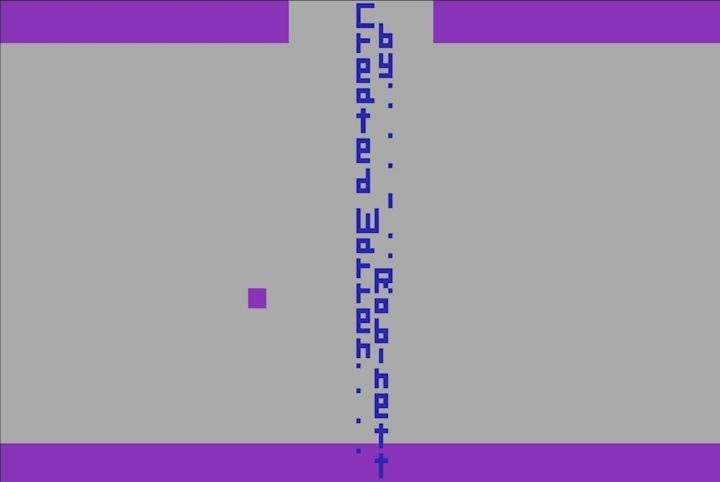AMMAN — Have you ever been playing one of your favorite games and ended up stumbling upon something unusual?
Video games have concealed within their games loads of different “Easter Eggs” and “secret rooms” and have done for years now. Whether you discover them accidentally or not, they always leave you with a feeling of accomplishment. But when did these mysterious game design choices start?
اضافة اعلان
The very first instance of a Secret Room/Easter Egg being hidden inside a game was 48 years ago, in a game called “Moonlander”, a game in which a player controlled a spaceship with the purpose of landing on the surface of the moon. But as more and more people played the game, players ended up making a unexpected discovery. If you flew your ship horizontally long enough you would end up seeing a McDonalds restaurant. Landing next to the eatery, your astronaut could visit the restaurant instead of the usual ending, an animation of the astronaut standing by his space ship.
Why did game creators do this?
While that example seems trivial, it was that which led to the iconic Easter Egg left by programmer Warren Robinett six years later in the Atari game “Adventure”, leaving his signature in a room that can only be reached using specific inputs in the game. The reason Robinett chose to hide this in the game was because the company he was working for did not credit the programmers on the game’s packaging at the time. This was risky, seeing how Robinett almost lost his job for making this statement to Atari, but to him, it was a risk worth taking to fight for programmers to get the credit they deserve.
 The secret room in "Adventure"(Photos: Mobygames.com)
The secret room in "Adventure"(Photos: Mobygames.com)
This has led to many games having secret “Developer Rooms” that are used to pay homage to its creators. A great example of this can be seen in “Borderlands”, where upon entering the room the player sees a large group photo of the game’s developers across one of its walls. But, this isn’t the only reason for programmers and developers to do this sort of thing.
Easter eggs for gamers
There’s a ton of variety when it comes to the types of Easter Eggs that players can find while exploring the game they’re playing, each one has a purpose. It could be something small yet memorable, such as the infamous “Robbie the Rabbit” in Silent Hill 4, or something bizarre with games like “Call of Duty” having zombies do the “coffin dance”, recently turned viral, when player inputs are done in a specific order.
And yes, while some of these do sound like they’re just placed in games to get a laugh out of gamers, it’s also a way for players to get to know the developers on a deeper level. Such examples can be seen in the Borderlands franchise, where the developers included nods to their favorite games and movies, such as the hidden Minecraft room, the bonfire from Dark Souls, and even a quest that was heavily influenced by the Lord of the Rings trilogy. And it’s moments like these that truly throw the player into a different sense of immersion in the game than the one they’re in. Some of these even go as far as to make the player feel part of a much larger community, with the most notable example of this being “The Cake Is a Lie” in the “Portal” franchise.
While some are a tad cheesy, Easter Eggs exist independently from the game, often not directly contributing in a big way to its gameplay or storyline, but rather designed to give players a good laugh while briefly breaking the narrative.
Quirky and a bit of harmless fun, Easter Egg hunting has gathered somewhat of a small cult following in the gaming world, with many games that came out back in the early 2000s being scoured for potential hidden messages or items to this day. An example of such lengthy searches would be Halo 3, where it took gamers seven years to find all of the hidden Easter Eggs.
No matter the reason, whether for plain fun, or to open a window into the developer’s mind, or as digital memorabilia to commemorate a developer that has passed, it is clear that these little additions to a game create a more unique and in-touch experience for players.
Read more about Gaming







